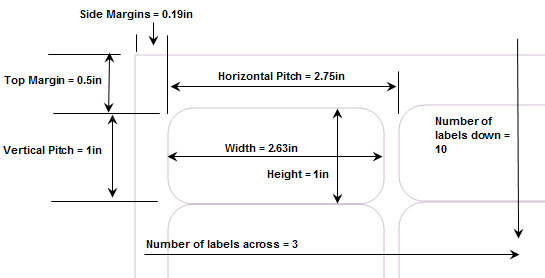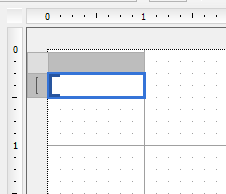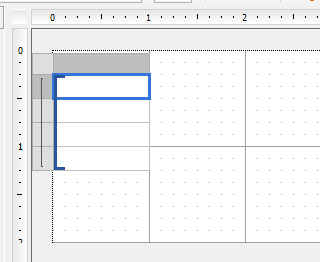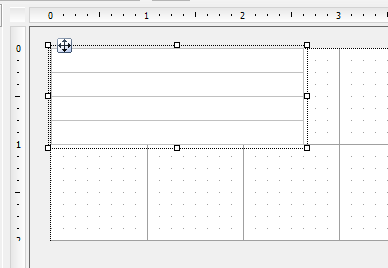How to Create a .NET Label Report Using Tablix
| Quick Start Guide | |
|---|---|
| What You Will Need | |
| Controls Referenced |
Tablix |
| Tutorial Concept | Tablix - Enhanced layout capabilities ranging from simple tables to advanced matrices arranged in rows and columns. In this example, a simple print-ready label is created with potential for greater branding and design. |
Whether you are in a small business or a large industry, the use of labeling is a basic need for many types of products. You may need asset management tags and labels for inventory documentation. You may also need labels for mailing and packaging.
There are many vendors like Avery or OnlineLabels.com that can provide labels in various sizes and layouts, fulfilling your specific business needs. However, it can be challenging to print data on the labels. Before printing the label, you need to generate a label template and adjust the data to fit the label dimensions. ActiveReports can help with designing the template, binding to desired data, and preparing a print-ready file, all in one place.
Let's familiarize ourselves with label reports and how to create print-ready labels with these few steps:
Step 1: Label Layout with Tablix
Step 2: Adjusting Tablix Dimensions
Step 3: Adjusting Report Settings
When You May Need a Label Report
Let’s understand this through a use-case—the banking industry. Suppose you are working for a banking organization and need to send a letter regarding the changes in the bank's policies to customers. Considering the large number of customers your bank has, you may want to make use of printed labels for the customer addresses.
The personal information about the customer is available in JSON format, through a web-service from the system that the bank is using for maintaining its data. In order to print the data on the physical labels, you'll need a label template that can bind with the JSON file.
You can find a Word or PDF template online for the label you are using, but it may not be easy to fetch data from a JSON file in these templates. In this case, you might either need a third-party tool or you can contact the label vendor to do the data binding for you.
How to Simplify Your Label Design Using Tablix
In this blog, we’ll see how to use a data region (Tablix) within RDL report type in ActiveReports to design the label report, taking Avery 5160 Label template as an example, whose dimensions are as shown below:

Follow these seven steps to build a Label Report using Tablix that is print and branding ready. Let’s get started:
Step 1: Design the Label Layout using Tablix Control
As a first step towards designing the desired layout, we'll add the Tablix control from Toolbox to the designer in an RDL report.
Note: If you want to use other data regions – List or Table or different report type – Page or Section for designing this report, you can read this article about label reports.
Next, we'll delete the following from the default 2x2 grid to get the layout as shown below:
-
Column Group
-
First column in the Tablix
-
First row containing the corner cell and column group cell

We’ll add rows depending on the data to show on the label. Here, we’ll add four rows to display Contact Name, Street address, City with Postal Code, and Country in the label as shown below:

Step 2: Adjusting Tablix to get Avery 5160 Dimensions
The next step is to adjust the Tablix size according to the Avery 5160 dimensions.
We’ll select the Tablix and set its “Width” and “Height” to 2.63 in and 1 in, respectively. Additionally, we'll set the Tablix’s Top and Left Location to 0 in.
The report at this point appears as shown below:

Step 3: Adjust the Report Settings to Fit the Label Sheet
This is the final step in layout design. Here, we’ll set the properties of the report’s body – columns, size, and margins, to match the actual Avery Label sheet.
-
Columns = 3, equal to the number of columns in the Avery label sheet
-
ColumnSpacing = 0.12in, representing the horizontal pitch
-
Size.Width = 2.63in and Size.Height =1in, equal to a label size
-
Margins.Left = 0.19in, Margin.Right = 0.18in, Margin.Top = Margin.Bottom = 0.5in
-
Paper = Letter (8.5 x 11in)

Step 4: Fetching Data for the Label
As the layout is ready, it's time to fetch the data for the label.
In this blog, we will use “customer.json” sample datasource that ships with the ActiveReports installer. Learn more about how to bind a report to JSON data fetched from a web-service.
Once the data is there, we’ll bind the cells in Tablix with the required fields. Add grouping on key data (ID) to show distinct customer data in the labels.
Step 5: Finalizing the Report
We’ll format the label to match the text style required on the printed label. The report will appear in the designer as shown below, after adjusting the row height, applying font style, and adding a border.

Step 6: Previewing the Report
The report is now ready for preview and it appears in the ActiveReports Viewer as shown below:

Step 7: Printing the Physical Label
You can now print on a physical label. With ActiveReports, you can do this in two ways: printing directly from the ActiveReports Viewer or printing an exported file, such as a PDF file.
While printing, ensure that the page scaling is set to “No Scaling” or the size options are set to “Actual Size” to avoid any alignment issues on the actual label.
Now you can design and print report labels. In this article, we used Avery Label as an example; however, with ActiveReports, you can design any label layout of your choice. This includes address labels, shipping labels, product labels, security labels, files, folder labels, and more. Additionally, you can design for any label provider (Avery Labels or OnlineLabels.com).
Creating a label report using the Tablix control in ActiveReports is a powerful way to generate professional, flexible, and print-ready layouts for mailing labels, product tags, and more. With its grid-like structure and customizable grouping, Tablix enables precise control over layout and data presentation, making it an ideal solution for generating high-volume label reports that align with your business needs.
Check out our complete label report sample (.rdlx) here, or if you have any questions or comments, please leave them below.
Ready to Build Your Label Reports? Download ActiveReports.NET Today!
